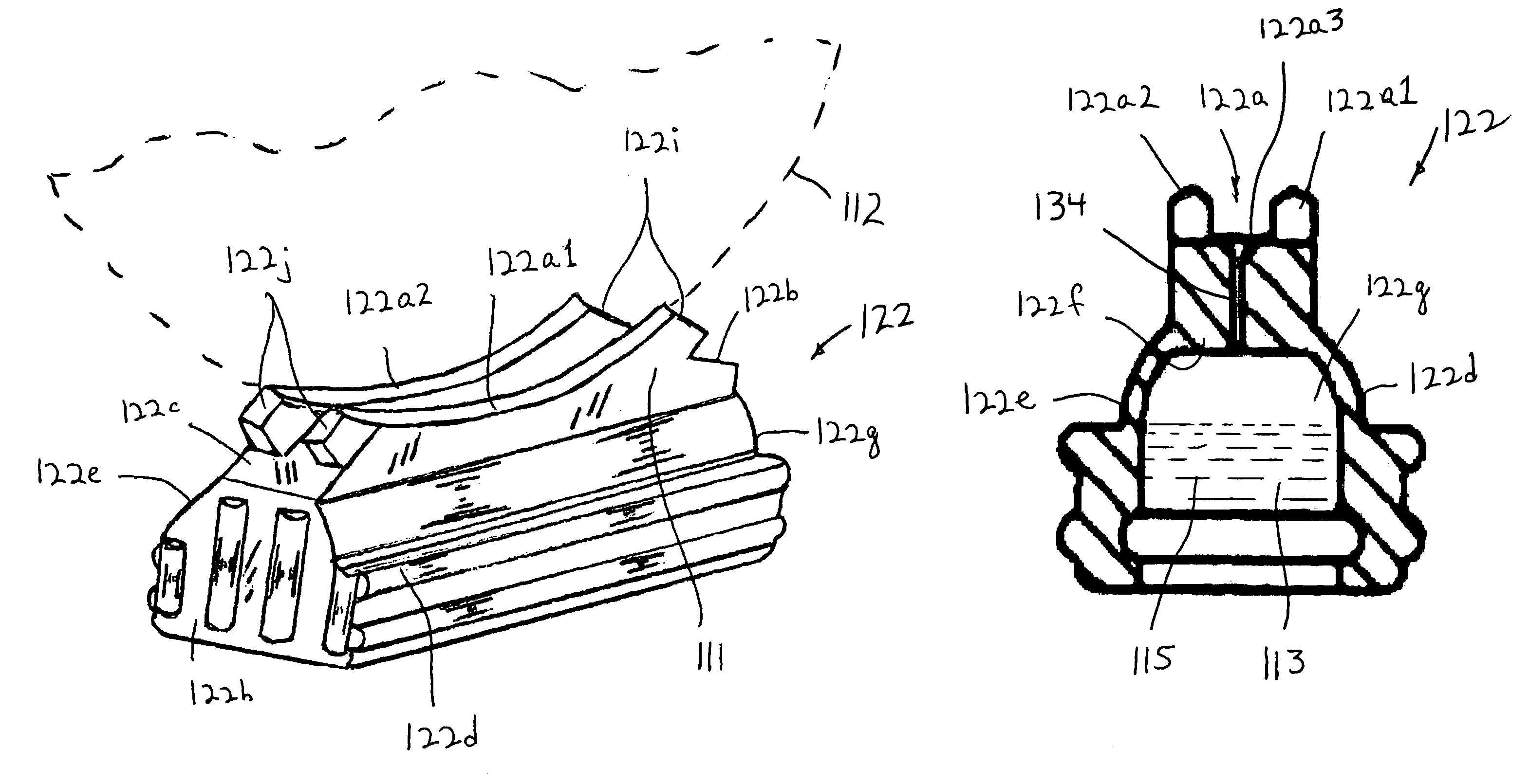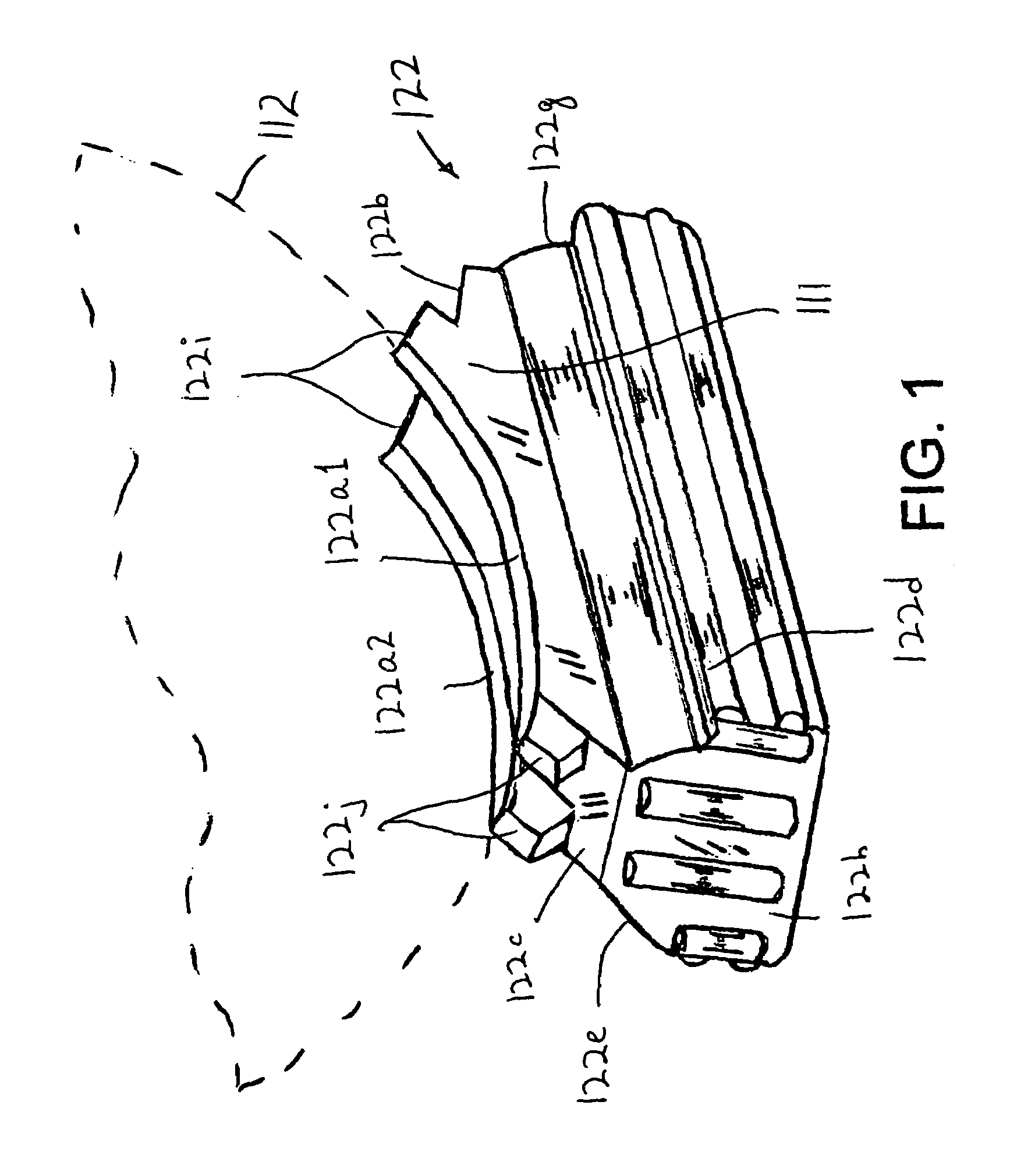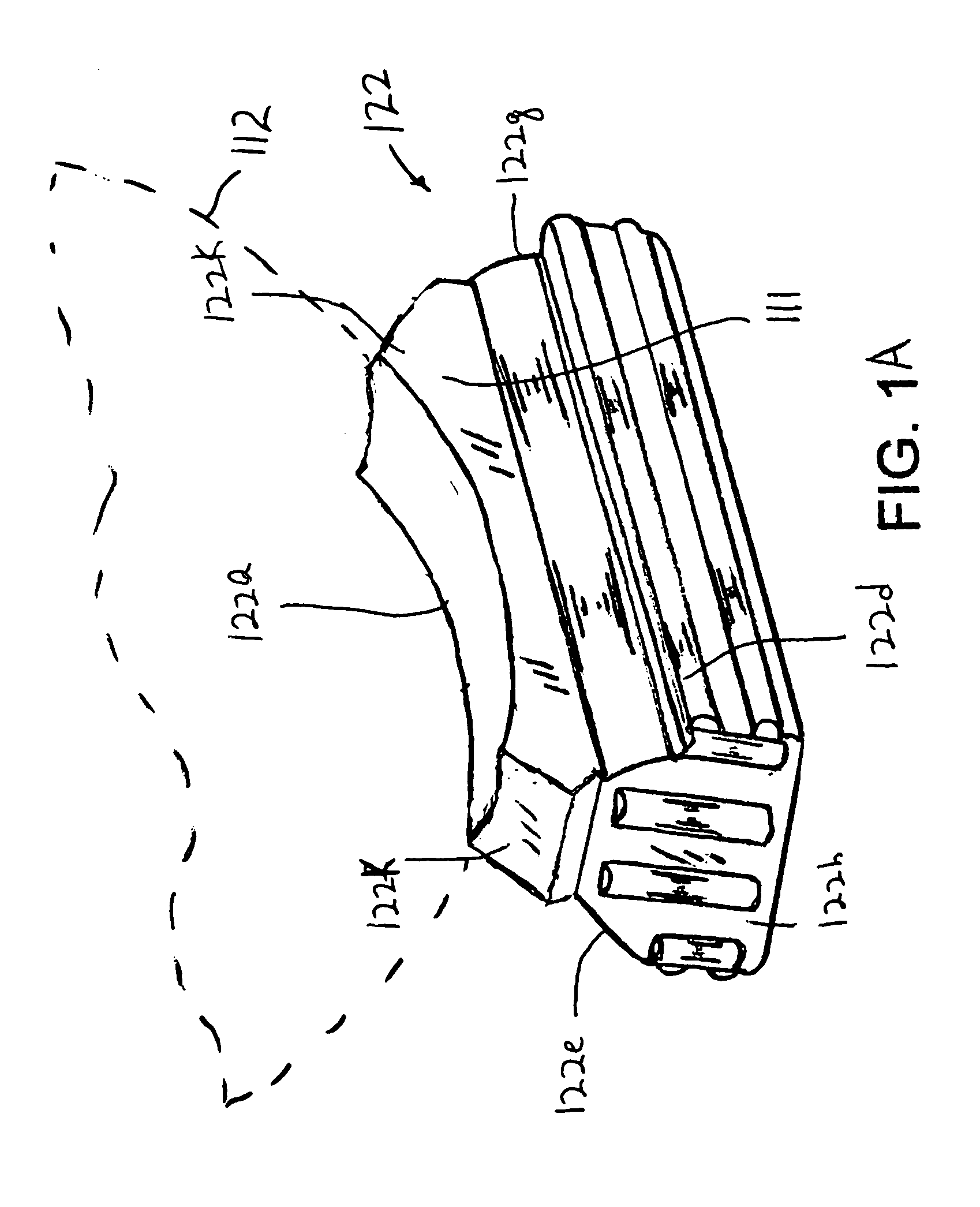Sealing assembly for an ink chamber which includes self-lubricating anilox roll seal with improved blade/seal area
a technology of ink chamber and seal, which is applied in the direction of mechanical equipment, coatings, distribution equipment, etc., can solve the problems of blades, which press against anilox rolls, and the seals are exposed to mechanical stresses as well as wear, and the blades are not flexible at the opposite end of the blades wher
- Summary
- Abstract
- Description
- Claims
- Application Information
AI Technical Summary
Benefits of technology
Problems solved by technology
Method used
Image
Examples
Embodiment Construction
[0044]Referring to the drawings in detail, and initially to FIG. 11 thereof, there is shown a conventional doctor and sealing blade sealing assembly 10. Conventionally, in printing machines, such as flexographic printing machines, an ink transfer or anilox roll 12 transfers ink to an adjacent plate roll (not shown) for printing. Ink is supplied to anilox roll 12 from an ink chamber 14 defined by a chamber housing 16 which is adjacent to and may partially surround anilox roll 12. Anilox roll 12 rotates in the direction of arrow 12a.
[0045]In order to prevent the escape of ink from ink chamber 14, while ensuring that the ink enters the cells in anilox roll 12 and has a predetermined volume on anilox roll12, sealing and doctor blades 18 and 20 are provided at the entry and exit positions of anilox roll 12 relative to ink chamber 14. Blades 18 and 20 are fixed to chamber housing 16 by an blade holder (not shown) so that blades 18 and 20 overhang chamber housing 16 and contact anilox rol...
PUM
 Login to View More
Login to View More Abstract
Description
Claims
Application Information
 Login to View More
Login to View More - R&D
- Intellectual Property
- Life Sciences
- Materials
- Tech Scout
- Unparalleled Data Quality
- Higher Quality Content
- 60% Fewer Hallucinations
Browse by: Latest US Patents, China's latest patents, Technical Efficacy Thesaurus, Application Domain, Technology Topic, Popular Technical Reports.
© 2025 PatSnap. All rights reserved.Legal|Privacy policy|Modern Slavery Act Transparency Statement|Sitemap|About US| Contact US: help@patsnap.com



